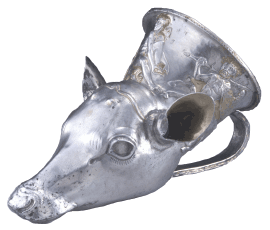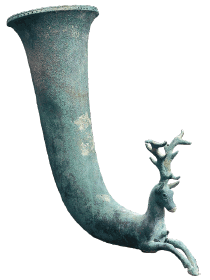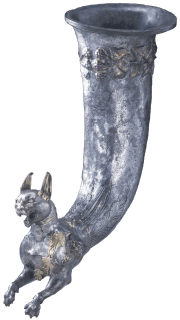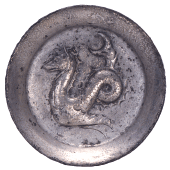


Dionysus, or Bacchus, was not only the god of wine but of fertility. He was also a savior who guided souls to Elysium, the land of eternal bliss. The deer represented rejuvenation and rebirth in spring and was offered as a sacrifice in secret Bacchanalian rituals. The expression of the stag, on the left, with its legs aligned and stretched out, cannot be seen among Persian-style rhyta. It perhaps symbolized the spoils of hunting.





From the time of Alexander’s (356 B.C.-323 B.C.) eastward advance on, many Greeks migrated to Central Asia and introduced their culture to this area. By the third century B.C., the Bactrian kingdom, which received Greek kings, became independent. In time, the Bactrians embraced the ideal of the Greek paradise Elysium, which eventually influenced Central Asian Buddhist images of paradise. The Greek sea monster ketos came to be adopted as a creature that led souls to the paradise in the early Buddhism of Central Asia.
Rhyta – Beautiful vessels that lead souls to paradise
Listen to their tales...

